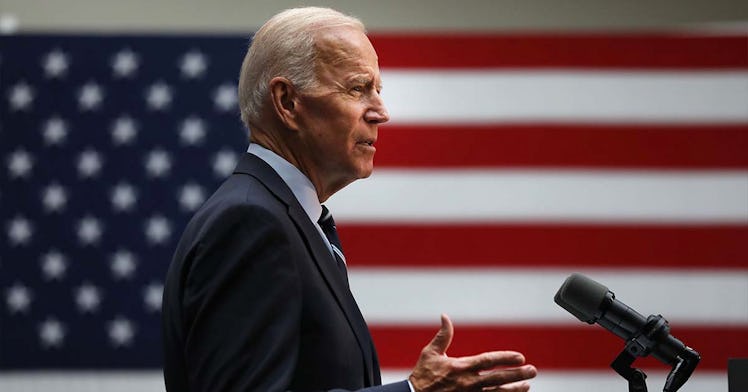Biden’s Next $3 Trillion Effort Would Be Gamechanger for Parents
Here's everything you need to know about the president's next recovery package, which would be a game changer for American parents.

Fresh off of his victory passing the $1.9 trillion American Rescue Plan Act, Joe Biden is setting his sights on a new spending package with an even bigger $3 trillion price tag. Instead of immediately addressing the public health and economic devastation wrought by COVID-19, this massive package would tackle the long-term recovery from COVID-19 — and would fight to build a stronger economy in general.
Here’s everything you need to know about the package, from what will likely be in it to how to pay for it to just how likely it is to give Biden the second big legislative W of his administration.
What would it do?
It’s impossible to be completely specific about what the bill is going to do, and administration officials told the New York Times that the details of the plan are still in flux and Biden wouldn’t announce specifics for some time. That being said, it is clear what issues the Biden team wants to address with this legislation: making the economy more equitable, combatting climate change, improving infrastructure, and strengthening the economy.
At the moment, the Washington Post says the initiative is expected to include the following
- $1 trillion total in infrastructure spending
- $400 billion to combat climate change include $60 billion for green transit infrastructure
- $200 billion for housing infrastructure, half of which would expand the housing supply for low-income Americans
- Free universal pre-kindergarten, community college tuition, and tuition at historically Black colleges and universities
- More subsidies for Affordable Care Act plans and childcare expenses
- Extension of the new child tax credit through 2025
- A measure to force pharmaceutical companies to lower their prices
If it reads like something of a Democratic wish list, well, that’s because it is. With rare control of the House, Senate, and the presidency that’s likely to end with the 2022 midterms, the party knows it has to take its big swings now. And this is a big swing.
How will we pay for it?
Instead of simply printing new money (and adding to the federal debt) to pay for this bill, as it did with the COVID-19 relief package, the Biden administration wants to fund these initiatives with progressive tax increases, which he has promised won’t affect people earning less than $400,000 a year. (For the record, there is a whole school of economic thought that suggests that printing new money is a totally valid way of paying for big spending bills.) The Post reports that the following increases are currently under discussion:
- Corporate tax rate from 21 to 28 percent
- Global minimum tax (an internationally agreed-upon floor for taxes on multinational corporations) from 13 to 21 percent
- Ending subsidies for fossil fuel companies
- Highest income tax rate from 37 to 39.6 percent
- Increasing taxes on wealthy investors
- Limiting deductions for rich taxpayers
Notably, the wealth tax championed by Elizabeth Warren, and the reversal of the GOP’s cap on state and local deductions are not expected to be included.
What is the status of the proposal?
Biden’s advisors are hammering out the details of the plan and are expected to introduce it to congressional leaders and allies in industry and labor sometime this week. Early indications are that the package will likely be split into two bills — one, an infrastructure and clean energy bill financed by the tax increases on businesses, and two, a bill focused on the other domestic priorities financed by the tax increases on wealthy individuals.
The White House said that the proposal would not be introduced to the public this week, likely so changes based on feedback received this week can be made.
Will it pass?
Predictably, Republican legislators are already signaling that any bill that includes tax increases and new government spending is a non-starter for them. But the scuttlebutt is also that centrist Democrats are extremely reticent to pass another huge spending package on party lines, something that would require going through the budget reconciliation process, waiving the Byrd rule, or reforming or eliminating the filibuster.
This package is the bulk of the “Build Back Better” platform the Democrats ran on in 2020, and to fail to enact it, particularly after actually getting the American Rescue Plan Act passed, would be a disaster. The pressure is going to be on GOP lawmakers to hold the line against the package, as inaction is a victory for their party. Moderate Democrats like Joe Manchin and Krysten Sinema will similarly face huge pressure from their party to drop their insistence on bipartisanship if and when the Republicans present a unified front.
It’s far too early to play the prediction game for how things will turn out, but what everyone can agree on is that the stakes could hardly be higher for both parties, the president, and American families.